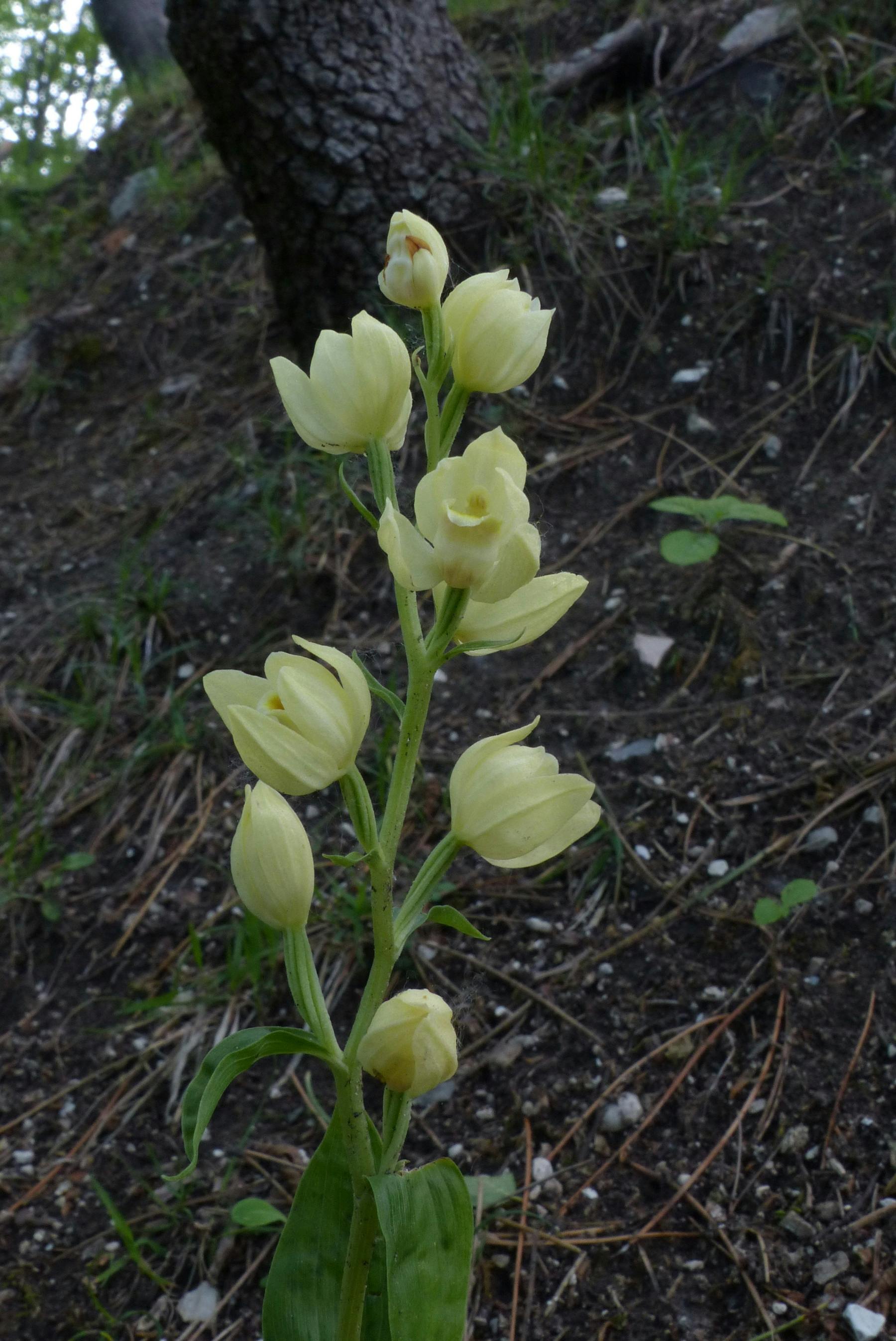Orchid – Genus Cephalanthera
The name is derived from the Greek kephalè, head, and antheros, floral, referring to the rounded shape of the anther (the terminal area of the male parts of the flower, responsible for pollen production).
Orchids are only found in the northern hemisphere; there are 15 species in total. Three are known in Italy, two of which can be found in the undergrowth of the Boboli Gardens: Cephalanthera damasonium and C. rubra.
Cephalanthera damasonium
It is assumed that the species name comes from the Greek word damaso, I tame (implying “I tame evil”), a name given, according to Pliny the Elder, to a plant considered an antidote to toad poison.
In Italy, this plant is found throughout the country, but is very common only in the Alps and the pre-Alpine foothills.
C. damasonium is a robust, hairless plant with leaves (4 to 10) arranged along the stem. The height of the plant varies from 15 to 60 cm. The flowers are rather large, yellowish-white and open completely only under optimal light and moisture conditions. They are arranged to form a loose spike.
The pollination of C. damasonium takes place mainly by means of insects (Hymenoptera) that are attracted by a visual deception: the flowers lack nectar, but exhibit yellow ridges on the labellum, mimicking a rich presence of pollen. In frequent cases, self-pollination occurs with the flower still closed. Like all Cephalanthere species, it can also reproduce vegetatively, i.e., by direct propagation of the rhizome.
The flowering period is from May to the end of June. The leaves are already visible in April. At Boboli, we can find a few specimens in the groves on either side of the cypress avenue, called locally Viottolone.
Cephalanthera rubra
The etymology of the name goes back to Latin ruber, red, from the colour of the flowers.
It is a slender plant, 20 to 60 cm high, with 5 to 8 lance-shaped, acuminate, dark green leaves with very pronounced longitudinal veins. The flowers, three to ten in number, are completely open, more or less deep pink in colour, with hair on the outer face. They form a loose spike, 10-20 cm long. The labellum, pale in the centre with purple-coloured edges, is narrower and shorter than the sepals, which have a pointed tip.
Pollination is performed by insects, but can also reproduce vegetatively, i.e., by propagation of the root system (rhizome).
It flowers from May to July, and the leaves become visible in spring. In Boboli, it has similar distribution to C. damasonium.
Orchidee d’Italia: Guida alle Orchidee spontanee. GIROS, Gruppo italiano per la ricerca sulle orchidee spontanee, Cornaredo 2024, pp. 384-386.
Le orchidee spontanee del Cansiglio, in “ I Quaderni del Cansiglio”, 2009, pp. 30-33.
